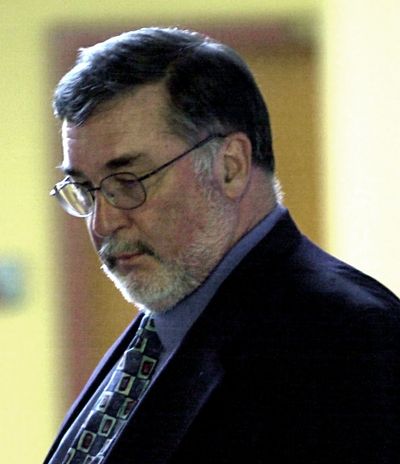Vatican took years to act on abusive cleric’s removal
Ratzinger cited ‘good’ of church

LOS ANGELES – The future Pope Benedict XVI resisted pleas to defrock a California priest with a record of sexually molesting children, citing concerns including “the good of the universal church,” according to a 1985 letter bearing his signature.
The correspondence, obtained by the Associated Press, is the strongest challenge yet to the Vatican’s insistence that Benedict played no role in blocking the removal of pedophile priests during his years as head of the Catholic Church’s doctrinal watchdog office.
The letter, signed by then-Cardinal Joseph Ratzinger, was typed in Latin and is part of years of correspondence between the diocese of Oakland and the Vatican about the proposed defrocking of the Rev. Stephen Kiesle, who pleaded no contest to misdemeanors involving child molestation in 1978.
The Vatican confirmed Friday that it was Ratzinger’s signature and said it was a typical form letter used in laicization cases. Attorney Jeffrey Lena said the matter proceeded “expeditiously, not by modern standards, but by those standards at the time,” and that the bishop was to guard against further abuse.
Another spokesman, the Rev. Ciro Benedettini, said the letter showed no attempt at a cover-up. “The then-Cardinal Ratzinger didn’t cover up the case, but as the letter clearly shows, made clear the need to study the case with more attention, taking into account the good of all involved.”
The diocese recommended removing Kiesle from the priesthood in 1981, the year Ratzinger was appointed to head the Vatican office that shared responsibility for disciplining abusive priests.
The case then languished for four years at the Vatican before Ratzinger finally wrote to Oakland Bishop John Cummins. It was two more years before Kiesle was removed; during that time he continued to do volunteer work with children through the church.
In the November 1985 letter, Ratzinger says the arguments for removing Kiesle were of “grave significance” but added that such actions required very careful review and more time. He also urged the bishop to provide Kiesle with “as much paternal care as possible” while awaiting the decision, according to a translation for AP by professor Thomas Habinek, chairman of the University of Southern California classics department.
Lena, the Vatican attorney, said “paternal care” was a way of telling the bishop he was responsible for keeping Kiesle out of trouble. Lena said Kiesle was not accused of any child abuse in the 5 1/2 years it took for the Vatican to act on the laicization.
The future pope also noted that any decision to defrock Kiesle must take into account the “good of the universal church” and the “detriment that granting the dispensation can provoke within the community of Christ’s faithful, particularly considering the young age.” Kiesle was 38 at the time.
Kiesle had been sentenced in 1978 to three years probation after pleading no contest to misdemeanor charges of lewd conduct for tying up and molesting two young boys in a San Francisco Bay Area church rectory.